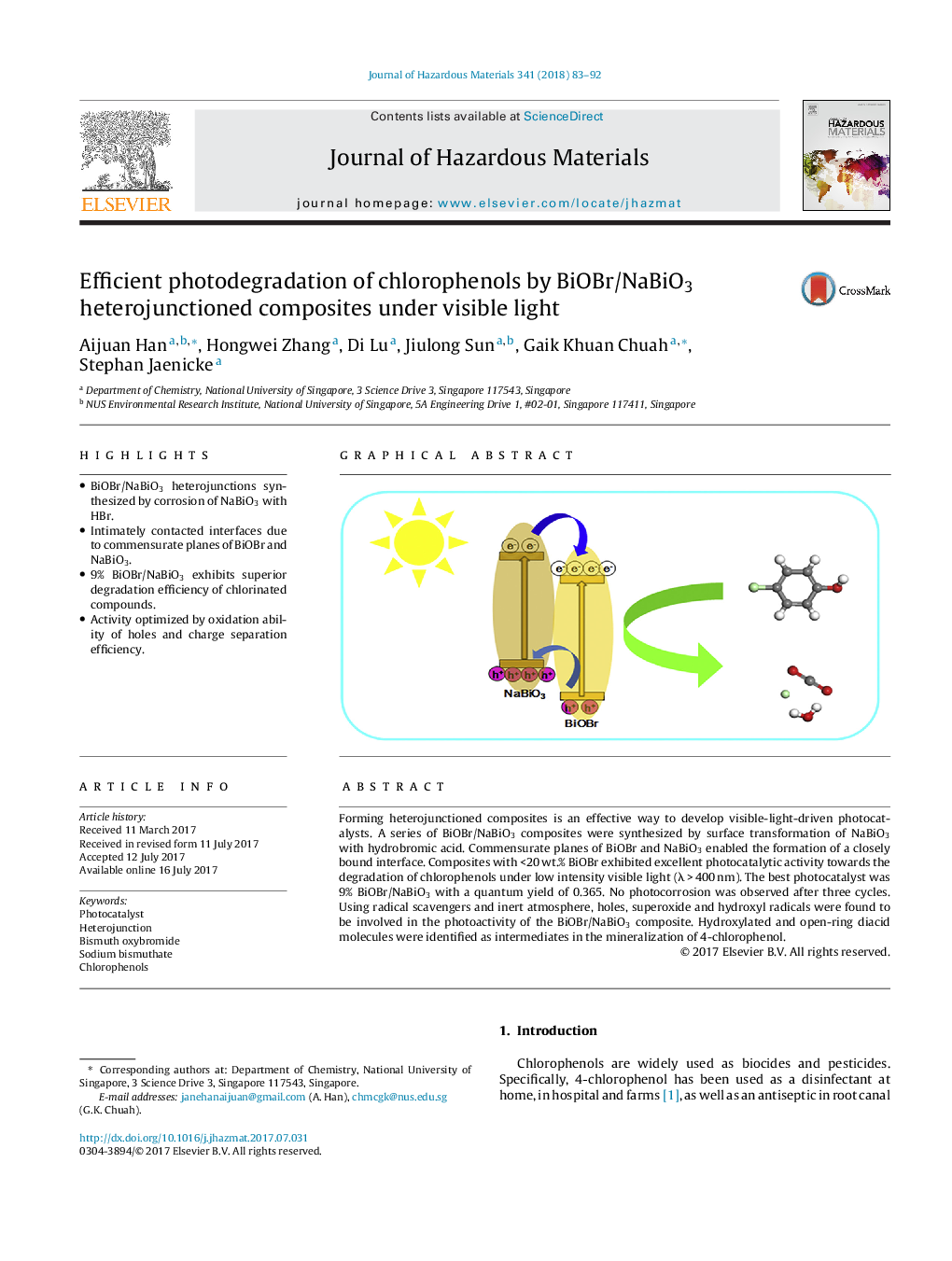| Article ID | Journal | Published Year | Pages | File Type |
|---|---|---|---|---|
| 4979251 | Journal of Hazardous Materials | 2018 | 10 Pages |
â¢BiOBr/NaBiO3 heterojunctions synthesized by corrosion of NaBiO3 with HBr.â¢Intimately contacted interfaces due to commensurate planes of BiOBr and NaBiO3.â¢9% BiOBr/NaBiO3 exhibits superior degradation efficiency of chlorinated compounds.â¢Activity optimized by oxidation ability of holes and charge separation efficiency.
Forming heterojunctioned composites is an effective way to develop visible-light-driven photocatalysts. A series of BiOBr/NaBiO3 composites were synthesized by surface transformation of NaBiO3 with hydrobromic acid. Commensurate planes of BiOBr and NaBiO3 enabled the formation of a closely bound interface. Composites with <20 wt.% BiOBr exhibited excellent photocatalytic activity towards the degradation of chlorophenols under low intensity visible light (λ > 400 nm). The best photocatalyst was 9% BiOBr/NaBiO3 with a quantum yield of 0.365. No photocorrosion was observed after three cycles. Using radical scavengers and inert atmosphere, holes, superoxide and hydroxyl radicals were found to be involved in the photoactivity of the BiOBr/NaBiO3 composite. Hydroxylated and open-ring diacid molecules were identified as intermediates in the mineralization of 4-chlorophenol.
Graphical abstractDownload high-res image (105KB)Download full-size image
